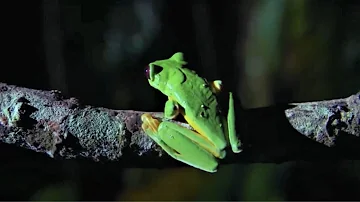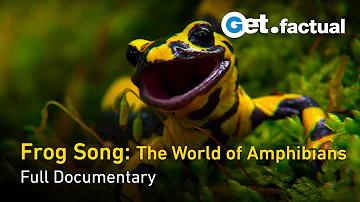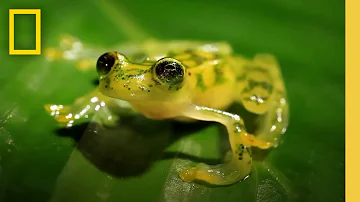
Edible Frog
Pelophylax kl. esculentus

Meet the Edible Frog
The Edible Frog is a semi-aquatic amphibian native to Europe, recognized for its vibrant green to olive coloration and distinctive dark spots. This species is the result of natural hybridization between the Pool Frog and the Marsh Frog, making it unique among European frogs. Edible Frogs are most commonly found in ponds, lakes, and slow-moving streams, where they bask on vegetation and hunt for insects. They are named 'edible' because they have historically been consumed as a delicacy, especially in French cuisine. These frogs play an important ecological role as both predator and prey in their freshwater habitats.
Classification
Amphibian
Habitat
Freshwater ponds, lakes, and slow-moving rivers
Diet
Carnivore
Lifespan
8-12 years
Conservation
Least Concern
Weight
30-90 grams
📖Fascinating Facts
Hybrid Origins
The Edible Frog is a natural hybrid between the Pool Frog (Pelophylax lessonae) and the Marsh Frog (Pelophylax ridibundus), resulting in unusual genetics and reproductive strategies.
Culinary History
This species gets its name because it has been traditionally eaten in Europe, especially in France, where frog legs are considered a delicacy.
Vocal Performers
Male Edible Frogs create loud croaking calls using inflatable vocal sacs, which help attract mates during the breeding season.
📋Detailed Description
The Edible Frog (Pelophylax kl. esculentus) is a medium-sized amphibian, typically reaching 6–12 cm in length, with males generally smaller than females. Its skin is smooth and moist, displaying a vibrant green to olive background color with irregular dark spots and a characteristic light dorsal stripe. The tympanum (external eardrum) is prominent, aiding in acute hearing, especially for mating calls. The species has long, muscular hind legs adapted for powerful swimming and leaping, and partially webbed feet for efficient movement in aquatic environments. Edible Frogs are semi-aquatic, spending significant time both in water and basking on emergent vegetation. Their eyes are positioned high on the head, allowing them to remain mostly submerged while scanning for prey or predators. This hybrid species exhibits a unique reproductive system known as hybridogenesis, resulting from crosses between the Pool Frog (P. lessonae) and the Marsh Frog (P. ridibundus). The Edible Frog is highly adaptable, thriving in a range of freshwater habitats, including ponds, lakes, marshes, and slow-flowing rivers. Its vocalizations are loud and complex, particularly during the breeding season, and males possess paired vocal sacs that inflate during calling. The species is an important ecological component, serving as both predator (feeding on invertebrates and small vertebrates) and prey for birds, fish, and mammals.
💡 Did you know?
The Edible Frog's unique hybrid status means it cannot always produce offspring without breeding with a parent species, making its reproductive biology especially fascinating.
🔬Research & Sources
Wikipedia Summary
The edible frog is a hybrid species of common European frog, also known as the common water frog or green frog.
Last Modified: 1/12/2025
🎭Behavior & Social Structure
Edible Frogs are diurnal and crepuscular, most active during daylight and twilight hours. They are opportunistic sit-and-wait predators, feeding primarily on insects, spiders, mollusks, and occasionally small fish or amphibians. Hunting is typically conducted from the water's edge, where frogs remain motionless before lunging at prey with a rapid extension of their sticky tongue. Socially, Edible Frogs are relatively gregarious outside the breeding season, often basking in groups on floating vegetation or logs. During the breeding season, males become highly territorial, engaging in vocal and physical displays to attract females and deter rivals. Their calls are produced by inflating paired vocal sacs, creating a distinctive, far-carrying croak. Edible Frogs are known to migrate short distances between aquatic habitats and terrestrial refuges, especially during seasonal changes or droughts. They exhibit site fidelity, often returning to the same breeding ponds year after year.
👶Reproduction & Life Cycle
Reproduction in Edible Frogs is complex due to their hybrid nature and involves a process called hybridogenesis. Breeding occurs from late spring to early summer (April–June), depending on latitude and local climate. Males congregate in shallow waters and produce loud calls to attract females. Amplexus (the mating embrace) is axillary, with the male grasping the female behind her forelimbs. Females lay up to 3,000–10,000 eggs in gelatinous clumps attached to submerged vegetation. Fertilization is external. The eggs hatch within 7–14 days, depending on water temperature, and tadpoles undergo metamorphosis over 2–3 months. Notably, Edible Frogs do not always produce fertile offspring when breeding with each other; successful reproduction often requires the presence of one of the parental species (usually P. lessonae), as hybridogenesis involves the selective elimination of one parental genome during gamete formation. There is no parental care after egg-laying; tadpoles are left to develop independently.
🛡️Adaptations & Survival
Edible Frogs possess several adaptations for semi-aquatic life. Their smooth, permeable skin allows for efficient cutaneous respiration and moisture absorption, critical for amphibian survival. The coloration provides camouflage among aquatic plants and dappled sunlight. Their long, muscular hind limbs and webbed feet are specialized for swimming and rapid escape from predators. The species' hybridogenic reproductive system is an evolutionary adaptation that enables persistence in variable environments, allowing genetic material from both parental species to be maintained. Vocal sacs in males are adaptations for sound amplification, crucial for mate attraction in noisy wetland habitats. Additionally, Edible Frogs can tolerate moderate levels of water pollution and habitat disturbance, contributing to their widespread distribution.
📚Research Sources
🎨Cultural Significance
The Edible Frog has played a notable role in European culture, especially in gastronomy. Known as 'grenouille' in French cuisine, its legs are considered a delicacy and have been harvested for centuries. The species is also referenced in folklore and local traditions, often symbolizing fertility and the renewal of spring. In scientific research, Edible Frogs have served as model organisms for studies in genetics, hybridization, and evolutionary biology, particularly due to their unique reproductive system. Their presence in wetlands is sometimes used as an indicator of ecosystem health.
🔬Recent Research & Discoveries
Recent research has focused on the genetic mechanisms underlying hybridogenesis in Edible Frogs, revealing complex patterns of genome elimination and inheritance. Studies have also examined the ecological impacts of hybrid populations on native amphibian communities and the potential for genetic introgression. Ongoing monitoring programs track population trends in response to environmental changes and disease outbreaks, such as chytridiomycosis. Acoustic studies have detailed the structure and function of male vocalizations, contributing to understanding of amphibian communication. Conservation research is increasingly addressing the effects of habitat fragmentation and climate change on hybrid frog dynamics.
🎥Wildlife Videos

Best Of Frogs | Top 5 | BBC Earth
Welcome to BBC EARTH! The world is an amazing place full of stories, beauty and natural wonder. Here you'll find 50 years worth ...
BBC Earth

Frog Song: The World of Amphibians - Full Documentary
Amphibians are living fossils in a modern world. The various species of frogs, toads, and salamanders are more diverse than you ...
Get.factual

The Glass Frog: Ultimate Ninja Dad | Animal 24
About National Geographic: National Geographic is the world's premium destination for science, exploration, and adventure.
National Geographic

The Secrets Of The Frog | Our World
Most people perceive frogs as cold, wet, slimy, ugly creatures that give us warts on the slightest contact. The closer we look at ...
Our World

"Wildlife on One: The Bat that Decoded the Frog's Secret"
"Uncover the intriguing tale within 'Wildlife on One' as it reveals 'The Bat that Decoded the Frog's Secret.' Delve into the ...
Tranquilites Ebb and Flow

Explore the Fascinating World of Frogs in This 4K UHD Video with Relaxing Music
Get lost in the beauty and wonder of the natural world with this 4K UHD frog video and relaxing music. From the delicate chirps of ...
Relaxing Music Source
🌍Habitat Information
The Edible Frog typically inhabits Freshwater ponds, lakes, and slow-moving rivers environments. Edible Frogs have adapted to their environments with specialized features and behaviors.
Primary Habitat:
Freshwater ponds, lakes, and slow-moving rivers
More detailed habitat information will be available soon.
🛡️Conservation Status
The Edible Frog is currently classified as Least Concern. Conservation efforts are crucial for preserving this species for future generations.
Common Threats:
- 🏠Habitat loss and fragmentation
- 🌡️Climate change impacts
- 🎯Hunting and poaching
- 🏭Human-wildlife conflict
⚠️Threats & Conservation Challenges
While classified as Least Concern by the IUCN, Edible Frogs face several localized threats. Habitat loss and degradation due to wetland drainage, agricultural expansion, and urbanization are primary concerns. Pollution from pesticides and fertilizers can negatively impact both adults and developing larvae. The introduction of invasive species, such as predatory fish and American Bullfrogs, poses additional risks. Climate change may alter breeding phenology and water availability, affecting reproductive success. Overharvesting for culinary purposes, particularly in parts of France and Italy, has led to population declines in some regions, although most commercial frogs now come from farmed or imported sources. Hybridogenic reproduction also makes populations vulnerable to changes in the presence of parental species, potentially destabilizing local populations.
🔬Scientific Classification
Scientific Name
Pelophylax kl. esculentus
Classification Hierarchy
🔍 About Taxonomic Classification
Taxonomic classification is a hierarchical system used by scientists to classify and organize living organisms based on shared characteristics and evolutionary relationships.
The system moves from broad categories (Kingdom) to increasingly specific ones, with each animal's scientific name typically consisting of its Genus and species.
📝Community Notes
Share your observations and insights about the Edible Frog with our community of wildlife enthusiasts.
Join Our Community
Sign in to share your observations and connect with fellow wildlife enthusiasts.
Sign In to ContributeNo community notes yet
Be the first to share your observations about the Edible Frog!
Explore Edible Frog
Select a tab above to learn more about this amazing animal.
📸Photo Gallery
No photos available for this animal yet.
🌟Discover More Wildlife
Continue your journey of discovery with more fascinating animals from our database
